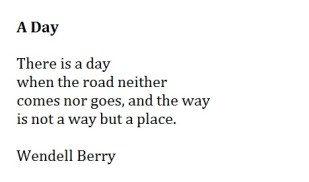In anticipation of the release of CCAR Press’s newest book, The Fragile Dialogue: New Voices of Liberal Zionism, we’ve invited several of the book’s contributors to share how the book came together. The book is officially available for pre-order now from CCAR Press.
Randy Newman, tongue planted firmly in cheek, wrote a song with the title “It’s Lonely at the Top.” When it comes to political ideology – and in particular, to Zionism – it’s more like “It’s lonely in the middle.” That covers a wide range somewhere between Haredi fanatics who want to expel every non-Jew from Greater Israel to those whom I call “template leftists” who see Israel only through the lens of colonialism. Where do we find the ground to engage in reasonable dialogue, even with those whose perspectives differ from our own, without any side claiming a monopoly on truth? Where do we find a safe ground for this dialogue to take place?
These questions prompted the vision for the forthcoming book, The Fragile Dialogue: New Voices of Liberal Zionism. In the autumn of 2011, I had guest-edited an issue of the CCAR Journal which contained a symposium on Progressive Religious Zionism. A few years later, Rabbi Stanley Davids (who had contributed a seminal article to that symposium) took the initiative to suggest that we expand that dialogue between the covers of a book. Our objective was to garner a wide spectrum of perspectives, ages, and topics. Now that we have seen the finished product, both of us are very pleased with the result – and we hope that you will be too.
Among other things, I’m happy that every article in the book presents something new and fresh. I learned something significant from each and every author. Rather than point to specific articles, I’d like to share some of the insights that I gained from the collection as a whole:
- I was reminded that, even though the Jewish population of Eretz Yisrael has been scant at times, we as a people have never relinquished our hope for a return. This constitutes the historical core of our Progressive Religious Zionism.
- I learned that there is a widening gap between Israeli Jews and Diaspora Jews with regard to our expressions of Zionism. We don’t always understand each other.
- I also read first-hand accounts of the distancing from Israel that is taking place, especially in the United States. This appears to be due to different factors: discomfort or disagreement with Israeli government policies, fear of being singled out on campus as an Israel supporter, or simple lack of interest.
- I became convinced that any solution to the above phenomenon will depend on intensive, creative and nuanced educational initiatives.
- It was also interesting to discover that liberal Zionism is expressed differently in different countries of the Diaspora. In our book, we gain an insight from the United Kingdom; I hope the exchange between Rabbis Baginsky and Gold will open the door for other nationalities to join the conversation and to learn from each other.
- I was saddened to read that, for some liberal Zionists, Israel must take second place to their home country in addressing issues of civil society. I would have hoped that the values of Reform/Progressive Judaism would be applicable – and necessary – for both nations.
These are my impressions after reading the essays in solitude on my computer screen. But my main hope for our Fragile Dialogue is that it will encourage readers to meet together and to initiate their own dialogues to discuss its contents and to seek meaningful responses. The book has been deliberately crafted so that a wide range of responses are presented and respectful disagreement is encouraged; and even beyond these, the door remains wide open for further thoughts and plans of action to emerge. I welcome you to pick up what I truly believe is a great read!
—
Rabbi Lawrence A. Englander serves as Rabbi Emeritus of Solel Congregation of Mississauga, Ontario and Adjunct Rabbi at Temple Sinai in Toronto. He also serves as Chair of ARZENU, the international Reform Zionist organization, until August of 2017. The Fragile Dialogue: New Voices of Liberal Zionism is now available for pre-order from CCAR Press.



















